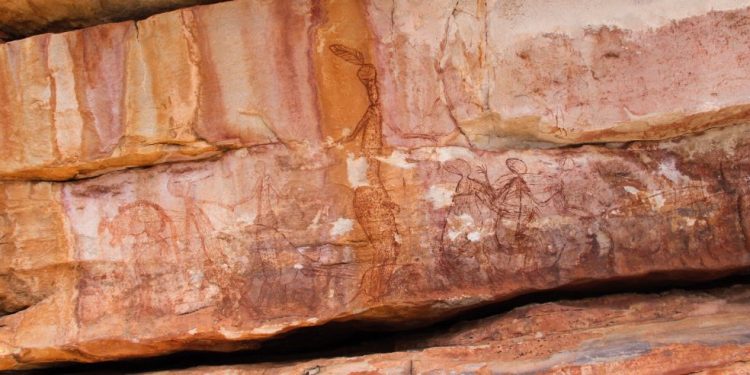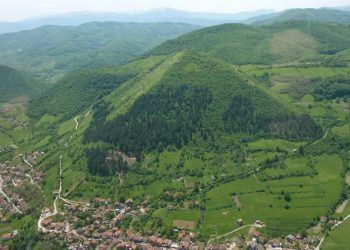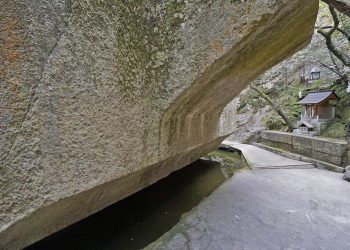Ancient rock art discovered in Australia, dating back some 9,000 years, has been interpreted as an entirely new, previously undescribed rock art style featuring numerous illustrations, including massive humanoids with cone-shaped heads.
What were ancient artists some 9,000 years ago trying to tell us? Are these illustrations examples of ancient folklore, legends, and myths? A new study published in Australian Archaeology details the discovery of a previously undescribed Arnhem Land rock art sky where we can see many elements, including out-of-place animals and massive humanoid figurines.
Cone-head Humanoids
Thousands of years ago, before the appearance of clay tablets and papyri manuscripts, ancient people worldwide used rocks to “paint” their stories and messages.
We can find traces of intricate examples of cave art worldwide. Whether it is Africa, Asia, Europe, or Oceania, we will come across stunning examples of ancient art no matter where we look.
Australia is considered the homeplace to the oldest continuous human culture on Earth, so it’s no surprise that it has approximately 100,000 prehistoric art sites.
Now, one more site has been found, and its contents are intriguing, to say the least. The ancient art discovered in Australia has been interpreted as a new representation of a new style. In addition, it has recently been documented throughout Arnhem Land, a historical region in northern Australia.
More specifically, intricate aboriginal art has been discovered near Awubarna (also known as Mount Borradaile. It was there where local Aboriginal experts and researchers had documented rock art examples from 87 different sites, among which are examples that are home to illustrations of usually tall humanoid figurines.
The rock art was discovered in an open-air gallery stretching 130 kilometers and contains 572 pieces, each of which strongly emphasizes the natural world and humanity’s place within it.
Professor Paul Taçon, an anthropologist who studied the recently uncovered sites, explains that “human figures are often painted together with animals, especially macropodids, and the relationship between humans and these animals seems to be a focal point in the artists’ message.”
The examples of rock art first spotted back in 2008 are unique for more reasons than one. Most importantly, these unusual scenes, illustrations, and diverse thematic look remarkably different from other ancient art from the same region. Their existence attests to a vibrant, diverse area of rock art.
Impressive rock art
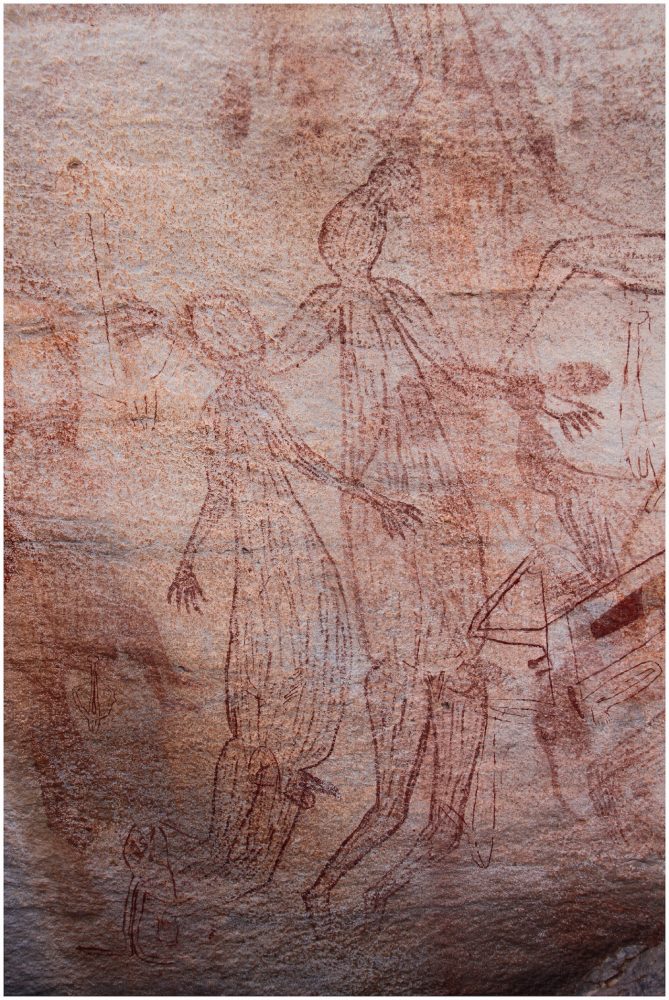
Compared to ancient rock art, including the style known as Dynamic Figures, the new Maliwawa Figures are less focused on humans and more on animals. In fact, only 42 percent of the paintings are humans, almost half the percentage of those found nearby.
Taçon, one of the researchers who analyzed cave art, reveals that the artists were communicating a message through rock art.
“The artists are clearly communicating aspects of their cultural beliefs, emphasizing important animals and interactions between humans and other humans or animals,” Taçon explained.
What’s more, Taçon, Griffith University Chair in Rock Art Research, explains that we are looking at a missing link in history.
He explained that these figurines are the missing link between the dynamic style, which stretches back in history some 12,000 years, and the X-ray style figures made in the last 4,000 years.
Experts have identified key differences between the 4,000-year-old rock art and the examples that date back some 12,000 years.
According to the researchers, it is evident that the red ocher lines are not filled and detailed like those in more modern X-ray rock art (a style so-called because the internal structures of animals and humans are visible).
Instead, scientists have revealed, the human figures are more rustic and less expressive, appearing on the murals as if they were floating, surrounded by an aura.
This aura is curiously present in many depictions of rock art around the globe. The humanoid figures’ peculiar size compared to the animals’ illustrations is also very interesting.
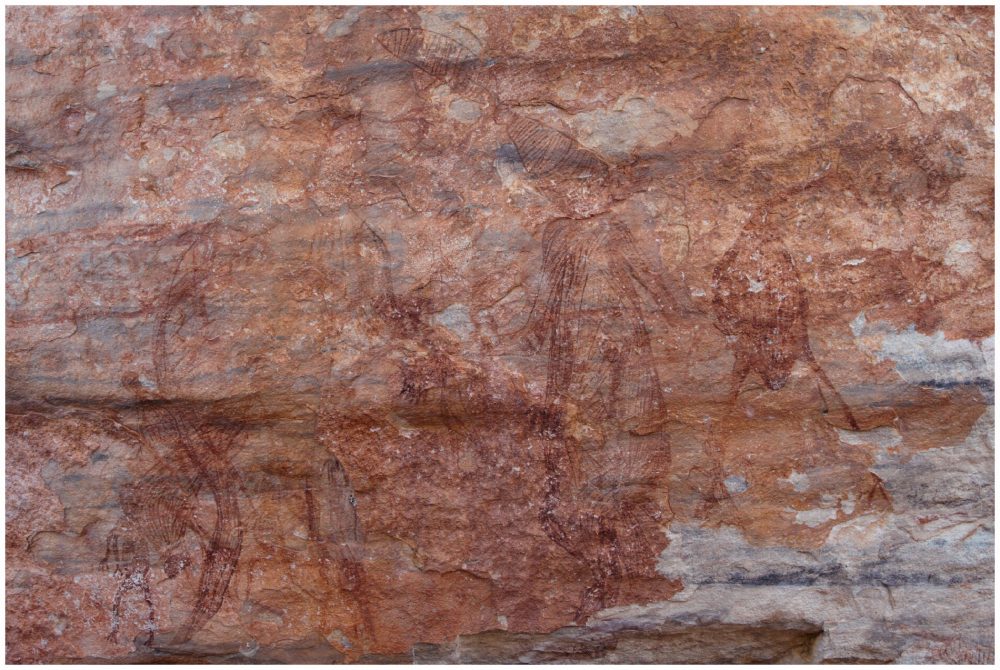
This, by far, is the most attractive description to me, as it practically tells us that the beings depicted on the murals are not the usual thing we would see. But, in addition to that, the scenery offers a plethora of other equally admirable elements.
The murals include what is now considered the older known depiction of a dugong, and experts say that its illustration on the murals appears to be out of place. “Today, it is located about 15 kilometers south of the Arafura Sea, but 6000-9400 years ago, the coast would have been further north,” revealed Dr. Sally K. May, who is co-author of the study.
This particular illustration tells us that whoever painted the animal was likely a traveler who visited the coast around 9,400 years ago. Still, given that it was not frequently illustrated, these voyages were unlikely to be frequent in ancient times.
But while many elements f the Maliwawa figures are extraordinary examples of ancient art, what strikes me the most are the various illustrations of “massive” humanoid figures that are painted with very elongated, cone-shaped heads.
The researchers have explained that this particular shape is likely an illustration of a headdress and not the shape of the heads. However, I feel compelled to mention that civilizations around the globe practice the “culture” of head binding (Artificial Cranial Deformation) through which a young child’s head is altered, forming an elongated conehead shape.
Whatever the case, I find the particular murals of great importance as they reveal, as explained by the researchers, a missing link in the history of the area’s aboriginal art.
Join the discussion and participate in awesome giveaways in our mobile Telegram group. Join Curiosmos on Telegram Today. t.me/Curiosmos
Sources and references: https://doi.org/10.1080/03122417.2020.1818361 / Taylor and Francis Online / All other sources and references are linked throughout the article



